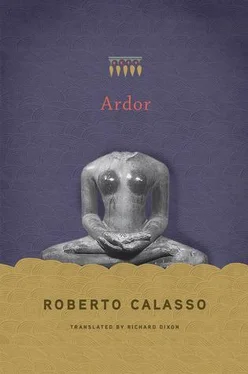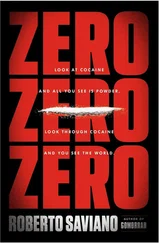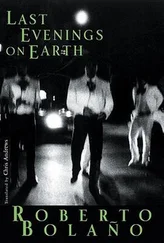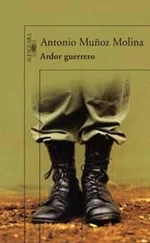Connective and substitutive : the two modes of the mind can be so defined by referring to their dominant characteristic. But, if we are referring to the implementation of their workings, they could also be described as analogical and digital , insofar as the principal way of substitution is through codification — and the number is what enables it to act with maximum ease and efficiency. And the digital mode is applied above all to the realm of quantity, where the result of an operation is a number that substitutes an initial number. Whereas the analogical mode is based on similarity, thus on the connection between entities of whatever kind.
Convention and affinity are other useful terms for defining the two poles of the mind. Convention means that, whatever a is, it can be decided that “it stands for b ,” therefore it substitutes it. An impositional principle, not based on argument — and highly effective. Affinity means that, for reasons not necessarily clear or apparent, there is something in a that it shares with b , so that anything said about b will in some way involve a. At the beginning it is a largely obscure terrain — and destined to remain so to some extent even at the end of any investigation. The perception of affinities is never-ending. We can say where the process begins, but not where it can be ended. The convention , on the other hand, begins and ends in the act with which it is established.
This is what we are made of. In the same way that the binary number system, in its simplicity, allows an endless series of applications, so the two modes of the mind lend themselves to supporting the widest variety of constructions that combine or mix together, or repel each other. And each continually referring to the other. Every decision that claims to divide them or declares the predominance of one over the other is useless, because both continue to operate, consciously or otherwise, at every instant, for anyone and in anyone.
* * *
The connective mode and the substitutive mode correspond to two irreducible elements of nature — and of the mind that observes it: the continuum and the discrete. The continuum is the sea; the discrete, the sand. The connective mode assimilates itself to the continuum, in that it produces a never-ending amalgam, an uninterrupted strip of figures where each enters the other. The substitutive mode multiplies indefinitely the grains that, seen from a certain distance, compose a single distinct figure, in the same way that the halftone screen allows things photographed to be recognized. More than categories, the continuum and the discrete are dimensions with which the mind works nonstop. And through them the world works. They are “the poles of a fundamental complementarity of thought throughout all time.” The mind and the world draw upon that obscure, inexhaustible background, like craftsmen in the same workshop.
* * *
There is nothing pleasant about the picture of someone taking an animal, tying it to a post, and then strangling or suffocating it, or slitting its throat. And yet that gesture formed the centerpiece of solemn rituals, in India and elsewhere. Clearly it must have been considered necessary, inevitable. Instead of concealing it, they flaunted it, surrounding it with bold and mysterious speculations. Then that same gesture, at a certain point during the Christian era, became unacceptable as a public spectacle. But the number of animals killed each day — strangled, suffocated, their throats slit (other methods of killing also came along in the meantime) — never diminished, indeed it steadily grew. There was no more talk of sacrifice , except in books. And yet, in laboratories, they talked about test animals being sacrificed.
Sacrificial practices all have a familiar nature, whether they are celebrated in Cameroon or among the Australian Aborigines, in the American Northwest or in the Temple of Jerusalem, in Mexico or Iran or in Imperial Rome. Examining documentary evidence or archaeological finds, it is impossible to deny that we know — in an obscure way — what they consist of. They are words and fragments of phrases that belong to dialects of one and the same language, of which nowhere is the grammar and syntax worked up to the degree of perfection that we find in the India of the Vedic ritualists. We can say of Vedic sacrifice what was said about the Mahābhārata : in it is found all that exists elsewhere — and what is not to be found there does not exist anywhere else. Every detail of the sacrificial rites of every part of the world can be illuminated from a passage in the system of Vedic sacrifice, yet there are many details of Vedic sacrifice that can be illuminated only by themselves. Behind the disparate, ramified, discordant practices of sacrifice — so disparate and so discordant that various scholars today, out of speculative cowardice, are tempted to treat sacrifice itself as an invention of anthropologists — the outline of a sacrificial vision can be recognized, and it involves everything. This vision, though ubiquitous and persistent, also has the following characteristic: if it is not accepted, it can dissolve away instantly. There is no obligation to describe, to interpret the world in sacrificial terms. There is nothing to prevent thinking in a way that totally ignores the sacrificial vision. Sacrifice itself can easily be described as a mental disorder. And yet its language cannot be expunged. Irritatingly, it remains and returns. The sacrificial practices have gone. But the word is still used — and everyone seems to understand it immediately, even without being anthropologists. At the opposite extreme, in Vedic India the sacrifice was like breathing. It is therefore a phenomenon that continues to exist even unconsciously — indeed it is an implicit condition of our own lives, in whatever place or time.
* * *
In the battle between sacrificial and anti-sacrificial stances, the most plausible result could be that the former is gradually defeated, abandoned, repressed, forgotten, superseded in Hegelian manner. It would remain, if at all, an archaic survival (it could be said of almost everything that it is an archaic survival) and some scholar would take it upon himself to search out traces of it.
But this is not the case. In its Vedic variant — the most complex, intricate, subtle, staggering — the sacrificial stance contains an implication that goes very far: it is quite possible to ignore the very thought of sacrifice, but the world will continue just the same — whatever happens — to be a huge sacrificial laboratory. In the words of Paul Mus: “Beginning from Śatapatha Brāhmaṇa , 10.5.3.1–12, a closer examination of sacrificial doctrine shows that, if sacrifice is the reason for every life, life itself, even if it is not redeemed by it, is like a sacrifice which ignores itself.” Now, if any life whatsoever is “a sacrifice which ignores itself,” every attempt to overcome sacrifice will turn out to be illusory. But why should the whole world be a sacrificial laboratory? Simply because it is based — every part of it — on an exchange of energies: from outside in and from inside out. This is what happens with every breath. And likewise with eating and excreting. Interpreting physiological exchange as sacrifice is the critical step, on which all else depends. And it is a step that, reduced to its most elementary form, implies only that between everything internal and everything external there is a relationship, a communication that can have a meaning — and a wide diversity of meanings, up to the hypermeaningful fervor of the Veda.
The sacrificial attitude implies that nature has meaning, whereas the scientific approach offers us the pure description of nature, in itself devoid of meaning. And this absence of meaning in the description is not due to an imperfect state of knowledge that can one day be remedied. Indeed, from description it will never be possible to reach meaning. Knowledge about a neural pathway, however perfect, will never be translated into the perception of a state of consciousness. This is the ultimate, insurmountable obstacle that the sacrificial attitude sidesteps at the very beginning. Perhaps arbitrarily. Indeed, most certainly arbitrarily, so far as the detailed correlations that it then sought to establish. But is it not an equally arbitrary gesture if, starting with a particular point of scientific investigation, we seek to introduce meaning into what is described?
Читать дальше












